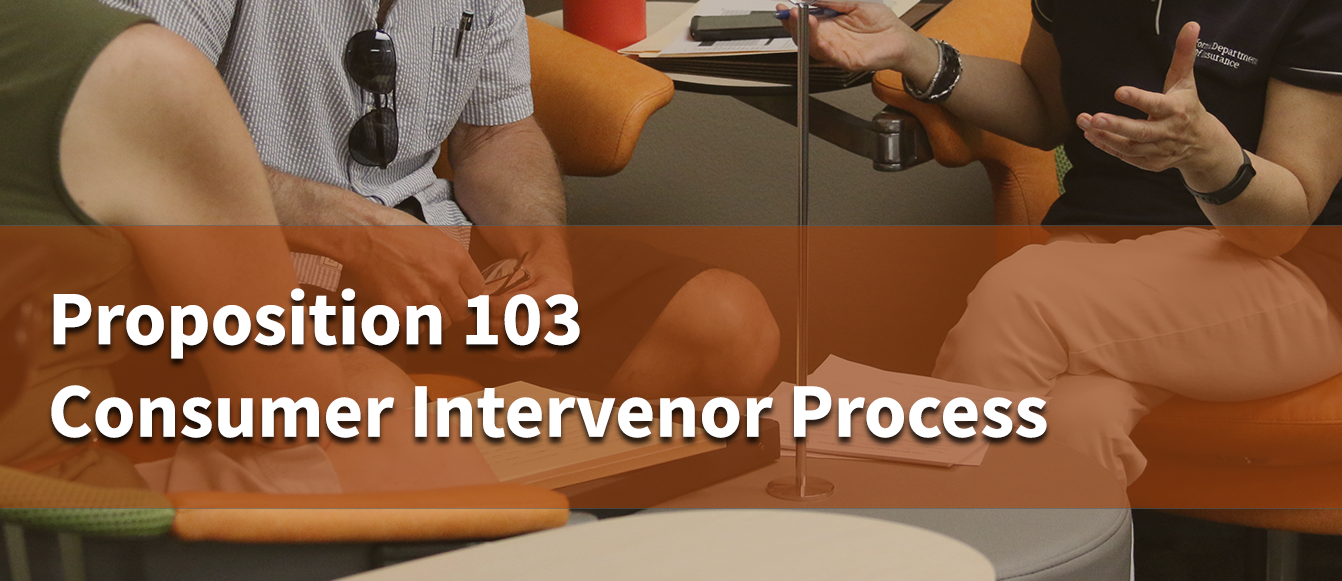Prop 103 Consumer Intervenor Process


Proposition 103
Proposition 103, passed by California voters in November 1988, was intended to protect consumers from arbitrary insurance rates and practices, to encourage a competitive marketplace and to ensure that insurance is fair, available and affordable for all Californians. Proposition 103 instituted a regulatory system where the Insurance Commissioner must approve a rate applied for by an insurer before its use, known as the “prior approval” system, before an insurer can implement property and casualty insurance rates. Thorough, impartial review by the Department’s rate regulation experts has saved Californians billions of dollars in premiums while helping to maintain a solvent market able to pay consumers’ claims.
The following lines of insurance are regulated by Proposition 103: Personal automobile, dwelling fire, earthquake, homeowners, inland marine, and umbrella; Commercial aircraft, automobile, boiler and machinery, burglary and theft, business owners, earthquake, farm owners, some fidelity, fire, glass, inland marine, medical malpractice, miscellaneous, multi-peril, other liability, professional liability, special multi-peril, umbrella, and coverage under the United States Longshoremen's & Harbor Workers' Compensation Act.
- Read the text of Proposition 103 – Insurance Code Sections 1861.01-1861.16

Intervenor Process
Proposition 103 authorized a process for the public participation in the administrative process for setting insurance rates. “Intervenors” who participate in rate filings are allowed to recover costs, expenses, and attorney’s fees from insurers, which under law can be passed on to all consumers. Only intervenors that provide a substantial contribution to a rate decision by providing valuable technical input may recover their costs and expenses as well as reasonable attorney's fees. Those representing the insurance industry or other entities are not entitled to receive compensation. In order to make a determination on whether an intervenor actually represents the interests of consumers, the Department of Insurance requires a potential intervenor to file a request for finding of eligibility, which includes information such as corporate records, consumer protection activities, and funding sources. The Department also publishes past awards of intervenor compensation and previous petitions to intervene, which potential intervenors can use to become familiar with the process and participate as intervenors. Similar to publicly accessible information regarding insurers, information regarding consumer representatives is important to ensure that all participants in the rate application process are complying with applicable statutes and regulations.
The Department publishes for public view the following:
- How to participate in the Intervenor Compensation Program
- Links to Notices Regarding Requests for Finding of Eligibility to Seek Compensation

Public Advisor
The Public Advisor monitors and assists participation by members of the public in the Department of Insurance's proceedings. If you have any questions, you can contact Public Advisor, Margaret Hosel.
Related Information:
-
Applicable Regulations (Title 10 CCR 2661.1 et seq)
- Consulting Actuaries that may work with Intervenors








